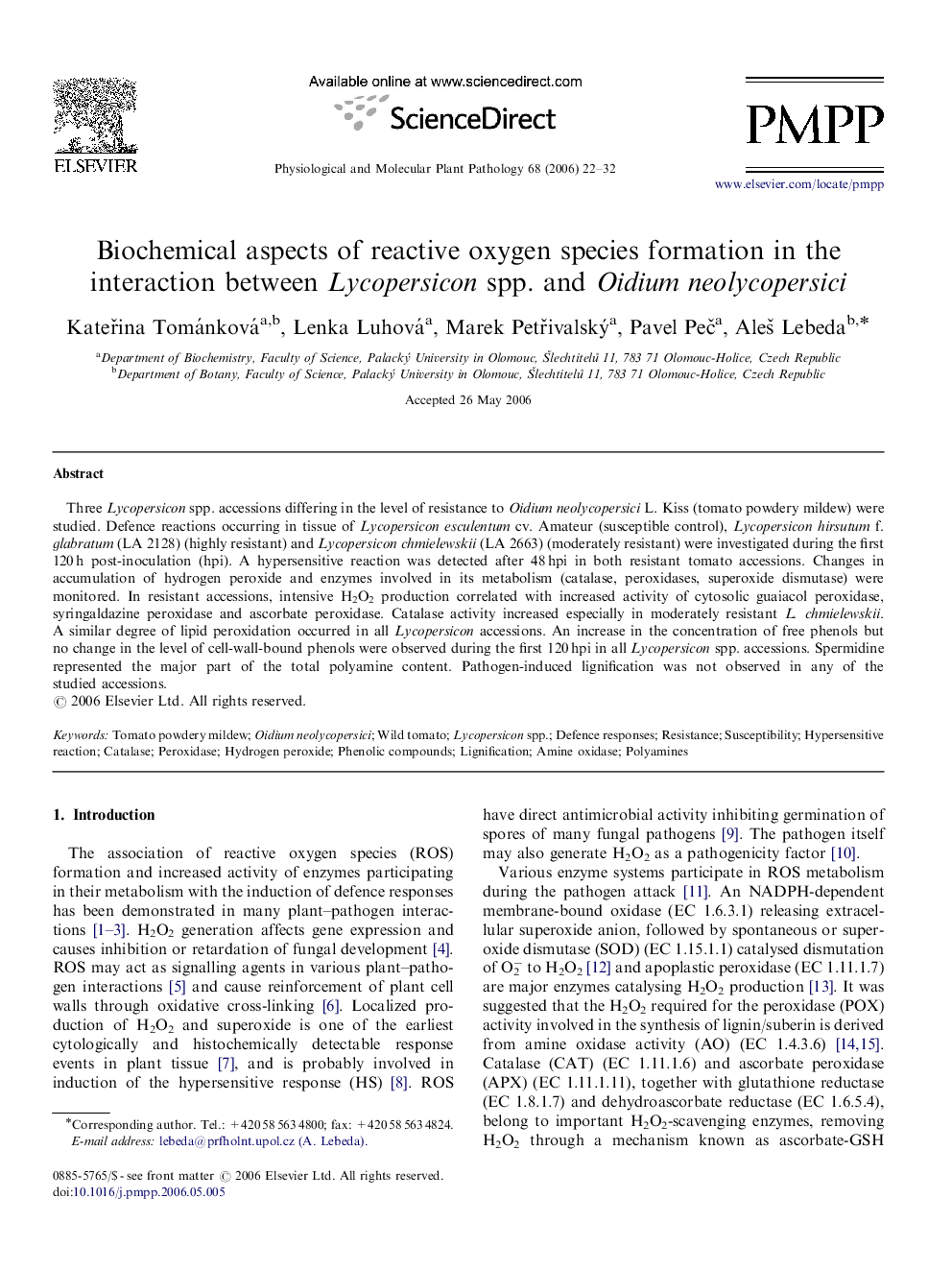| Article ID | Journal | Published Year | Pages | File Type |
|---|---|---|---|---|
| 2836821 | Physiological and Molecular Plant Pathology | 2006 | 11 Pages |
Three Lycopersicon spp. accessions differing in the level of resistance to Oidium neolycopersici L. Kiss (tomato powdery mildew) were studied. Defence reactions occurring in tissue of Lycopersicon esculentum cv. Amateur (susceptible control), Lycopersicon hirsutum f. glabratum (LA 2128) (highly resistant) and Lycopersicon chmielewskii (LA 2663) (moderately resistant) were investigated during the first 120 h post-inoculation (hpi). A hypersensitive reaction was detected after 48 hpi in both resistant tomato accessions. Changes in accumulation of hydrogen peroxide and enzymes involved in its metabolism (catalase, peroxidases, superoxide dismutase) were monitored. In resistant accessions, intensive H2O2 production correlated with increased activity of cytosolic guaiacol peroxidase, syringaldazine peroxidase and ascorbate peroxidase. Catalase activity increased especially in moderately resistant L. chmielewskii. A similar degree of lipid peroxidation occurred in all Lycopersicon accessions. An increase in the concentration of free phenols but no change in the level of cell-wall-bound phenols were observed during the first 120 hpi in all Lycopersicon spp. accessions. Spermidine represented the major part of the total polyamine content. Pathogen-induced lignification was not observed in any of the studied accessions.
